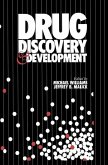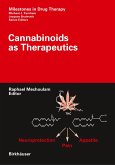Comprehensive and authoritative, Opioid Receptors and Antagonists: From Bench to Clinic offers neuroscientists, pharmacologists and interested clinicians a unique survey of the extensive and diverse research efforts currently employed with opioid antagonists to develop novel innovative drug therapies.
- Summarizes the present understanding of the chemistry, pharmacology and molecular biology of opioid receptors and their subtypes
- Highlights differences and similarities between the opioid pharmacology of animals and human
- Describes current and potential therapeutic areas for opioid antagonists, including substance abuse, alcohol and ingestive behaviors, behavioral disorders and other medical indications, supported by nonclinical and clinical evidence
- Focuses on the development of exciting and innovative drug delivery approaches that are being used with opioid antagonists for the above medical indications
The evolution in our understanding of opioid receptors and their subtypes is in- mately linked to the development of new pharmacological treatments for diseases/ disorders as diverse as addiction, self-injurious behavior, pain, cancer, infl- mation, eating disorders, traumatic injury, pruritis, and movement disorders. These potential treatments involve both novel chemical entities and classic opioid antagonists with improved drug delivery systems. The contributions contained in Opioid Receptors and Antagonists: From Bench to Clinic represent the efforts from some of the leading international scientists and clinicians making use of the l- est information emerging from the study of the opioid receptor system. Given the number of researchers currently active in this and related fields of study, it would be inappropriate to suggest that the entire range of activities is fully reflected in this single volume. Instead, a variety of experimental and clinical approaches involving the fields of neuroscience, molecular biology, biochemistry, anatomy, pharmacology, psychology, and psychiatry have been chosen to illustrate rapidly developing experimental and therapeutic areas.
- Summarizes the present understanding of the chemistry, pharmacology and molecular biology of opioid receptors and their subtypes
- Highlights differences and similarities between the opioid pharmacology of animals and human
- Describes current and potential therapeutic areas for opioid antagonists, including substance abuse, alcohol and ingestive behaviors, behavioral disorders and other medical indications, supported by nonclinical and clinical evidence
- Focuses on the development of exciting and innovative drug delivery approaches that are being used with opioid antagonists for the above medical indications
The evolution in our understanding of opioid receptors and their subtypes is in- mately linked to the development of new pharmacological treatments for diseases/ disorders as diverse as addiction, self-injurious behavior, pain, cancer, infl- mation, eating disorders, traumatic injury, pruritis, and movement disorders. These potential treatments involve both novel chemical entities and classic opioid antagonists with improved drug delivery systems. The contributions contained in Opioid Receptors and Antagonists: From Bench to Clinic represent the efforts from some of the leading international scientists and clinicians making use of the l- est information emerging from the study of the opioid receptor system. Given the number of researchers currently active in this and related fields of study, it would be inappropriate to suggest that the entire range of activities is fully reflected in this single volume. Instead, a variety of experimental and clinical approaches involving the fields of neuroscience, molecular biology, biochemistry, anatomy, pharmacology, psychology, and psychiatry have been chosen to illustrate rapidly developing experimental and therapeutic areas.
From the reviews: "The authors do an excellent job of providing insight into the background of the many factors related to opioid receptor antagonists. ... Overall, this work is a well written and interesting text and would be a very useful addition to the personal libraries of those medicinal chemists with a research interest in the modulation of the opioid receptor system." (Thomas E. Prisinzano, Journal of Medicinal Chemistry, Vol. 53 (2), March, 2010)








